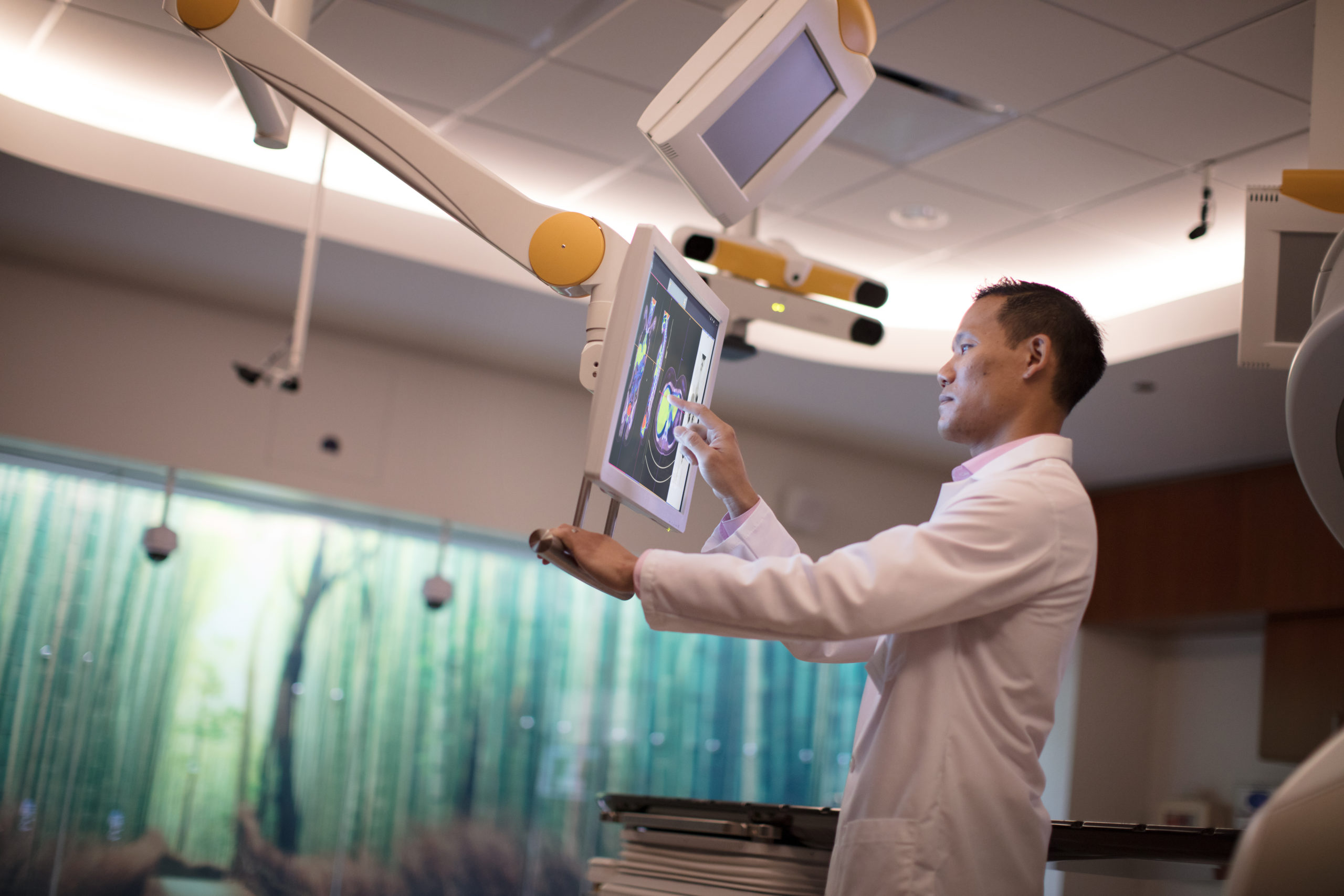Kaiser Permanente study finds new classification and clinical navigation system benefits patients
A standardized radiology reporting system that automatically refers patients with suspicious lung nodules to a multidisciplinary care team improved the odds that a patient would be diagnosed with lung cancer at an early stage, a new study by Kaiser Permanente researchers shows.

Standardized reporting and navigation in Kaiser Permanente Northern California (KPNC) medical centers “allowed us to get patients quickly embraced into our system and be taken care of,” said first author Thomas Urbania, MD, a radiologist at The Permanente Medical Group. “It’s hard to get a call from a doctor who is telling you that something was found on your scan. It’s of immediate value to patients for us to be able to explain that we have experts who are looking at the scan and that we have a plan for them. We can’t make the bad news go away, but we can tell them ‘we’ve got you.’”
The observational study, published in November in the journal Chest, included 99,148 KPNC patients age 18 and over who had a chest computed tomography (CT) scan between January 2015 and July 2017. During that time, 40% of the patients were tagged under the new system, and 2.9% were diagnosed with lung cancer. Patients whose scans were reviewed with the new reporting system had a 24% greater odds of an early-stage lung cancer diagnosis than patients whose scans were read before the new system was implemented.

Lung cancer found at an earlier stage is easier to treat and patients have better outcomes. Currently only about 17% of lung cancer cases are diagnosed at an early stage. When found early, relative 5-year survival rates are 59%. However, the majority of lung cancers — 57% — are not diagnosed until the cancer has spread, or metastasized, to other parts of the body. For these patients, relative 5-year survival rates are 5.8%. The American Cancer Society estimates that in 2020 about 228,820 people will be diagnosed with lung cancer and about 135,720 will die from the disease. It is the leading cause of cancer deaths in the U.S.
Typically, radiologists provide a written description of their findings to the physician who ordered the chest CT scan. “Historically, no guidelines have been in place for radiologists to follow for reporting their results,” said study co-author Lori Sakoda, MPH, PhD, a research scientist at the Kaiser Permanente Division of Research. The new strategy, which divides findings into categories, is modeled after a similar approach used for reporting results from screening mammography. However, as the researchers explain, standardized reporting for chest CT scans is harder to implement because of the wider potential range of findings.

“Cancer care is very complicated and involves many protocols and workflows,” said study co-author Lisa Herrinton, PhD, a senior research scientist and epidemiologist at the Division of Research. “There are lots of pieces that have to be moved around and making changes can be very complex. We were happy to see that the new system led to greater diagnoses of early stage lung cancer.”
Under the new system, radiologists classify pulmonary findings into one of 8 categories; category 5 is used to report findings suspicious for lung cancer. Then, a process developed by study co-author Ashish Patel, MD, a thoracic surgeon at The Permanente Medical Group, automates referral of patients with a category 5 result to a daily triage physician, typically a pulmonologist or thoracic surgeon, who provides treatment recommendations.

Complicated cases are discussed at weekly multidisciplinary conferences. The team takes over the patient’s care or makes recommendations to the patient’s primary care physician. The new system builds on previous work at Kaiser Permanente Oakland Medical Center to standardize tagging of CT reports by pulmonary findings.
The study did not find that the new system reduced the time from diagnosis to surgery. “Once you streamline one part of the system, you need to look at other parts of the system downstream,” said Urbania. “Now that we’ve eliminated one delay, we can make improvements in other areas.”
Future studies will look at whether the new system improves lung cancer survival rates. The researchers’ expectation is that it will. “It’s reasonable to assume that if more people are diagnosed earlier, more people will survive longer,” Urbania said.
The project is supported by The Permanente Medical Group Delivery Science and Applied Research (DARE) Initiative.
Coauthors include Jennifer Dusendang, MPH, Stacey Alexeeff, PhD, and Douglas A. Corley, MD, PhD, MPH, of the Kaiser Permanente Division of Research; Todd Osinski, MD, of The Permanente Medical Group; and Sora Ely, MD, University of California San Francisco.
# # #
About the Kaiser Permanente Division of Research
The Kaiser Permanente Division of Research conducts, publishes and disseminates epidemiologic and health services research to improve the health and medical care of Kaiser Permanente members and society at large. It seeks to understand the determinants of illness and well-being, and to improve the quality and cost-effectiveness of health care. Currently, DOR’s 600-plus staff is working on more than 450 epidemiological and health services research projects. For more information, visit divisionofresearch.kaiserpermanente.org or follow us @KPDOR.





This Post Has 0 Comments